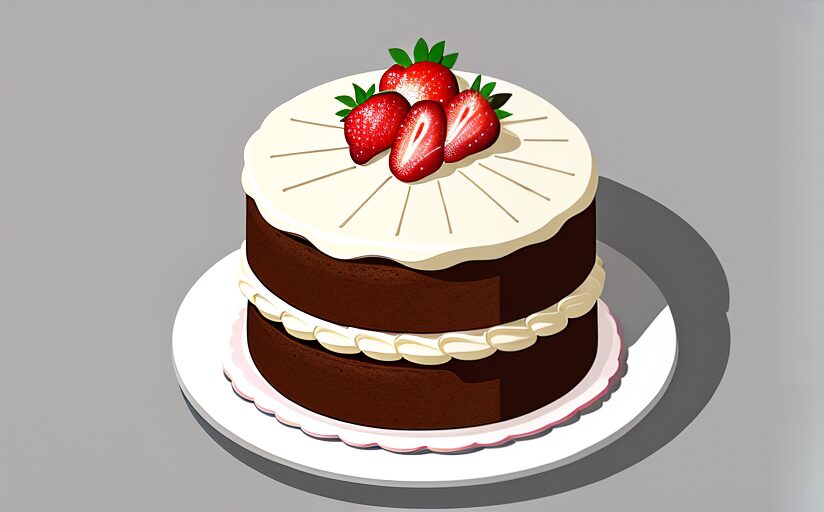There’s almost a beauty to the overlapping of categorizations in the Venn diagram of nouns. Teenagers are concrete and countable. But, as a party of children, they become singular even though a party is a group by definition, and children is always plural. Whether nominalizations, abstract, plural, collective, concrete, or singular, all must fall into one of these two categories: countable and uncountable nouns.
What Is the Difference Between Countable and Uncountable Nouns?
We have names for every organic and inorganic object, feeling, concept and idea — and when we don’t have one, we usually just make one up. These words are nouns, and as they represent either an individual object or indeterminate mass, we label them as either countable or uncountable.

1. Countable Nouns
People, places, things and concepts represented as individual units are countable nouns. The word noun, for example, is a countable noun. We can count two nouns in a phrase or thousands in a dictionary.
Countable nouns can be living things, inanimate objects or abstract ideas, as long as they can be counted separately:
- A teenager
- Fifty friends
- One party
- Two parents
- Three punishments
2. Uncountable Nouns
Uncountable nouns, yes, cannot be counted. They often name amorphous substances, physical yet formless elements, or intangible concepts:
- Punch
- Confetti
- Music
- Ambiance
- Fury
It may help to remember that uncountable nouns are also referred to as mass nouns and, therefore, cannot be expressed as six thousand confettis, fifteen musics or one hundred furies — no matter how angry the teenager’s parents were.
Is There a Method in the Countable vs Uncountable Nouns List?
Taking some of the other noun types into account can help establish patterns that are useful for methodically sorting words into a countable vs uncountable nouns list.
1. Concrete Nouns
My favorite litmus test for concrete nouns is, “Well, can you kick it?” Concrete nouns are tangible; they can be seen, be heard, or have at least some physical traits. Most concrete nouns are countable, but there are a few exceptions.
| Countable Concrete: | Examples: |
| lizards | I have nine lizards in the tank. |
| budgerigar | Those seven budgerigars are noisy! |
| ferret | I think our ferret is hiding. |
| peacock | The peacock would rather strut than hide. |
| Uncountable Concrete: | Examples: |
| flour | How much flour do we need? |
| oil | Stir in the oil. |
| batter | Mix the batter until it’s smooth. |
| butter | We need butter to grease the pan. |
2. Abstract Nouns
Virtually any noun that doesn’t fall within the physical realm is abstract. These intangible things often represent feelings, ideas, concepts and characteristics, to name a few. Although abstract nouns are not tangible, it is common for many of them to represent individual units. Still, the larger portion of abstract nouns consists of uncountable nouns.
| Countable Abstract: | Examples: |
| friendship | He made several new friendships. |
| loss | He felt her loss very deeply. |
| pleasure | Making him laugh is one of her greatest pleasures. |
| liberty | She has taken many liberties with our trust. |
| Uncountable Abstract: | Examples: |
| brilliance | The brilliance of your idea is astounding. |
| luck | Could we have any better luck? |
| calm | I fear this is the calm before the storm. |
| clarity | In a moment of clarity, I saw the answer. |

3. Collective Nouns
The last category of countable nouns vs uncountable nouns is collective nouns, which name groups of living or inanimate objects. They have some peculiar grammatical quirks, but like other types of nouns, some of them are countable and can take both singular and plural forms:
- There are actually five skydivers on a four-way skydiving team, and sixty teams are competing this year.
- Before the U.S. built ships for its navy, the British and Spanish navies battled for centuries.
Other collective nouns are uncountable, no matter if they are grammatically treated as singular or plural:
- Singular: Poultry is my favorite meat.
- Incorrect: I like all poultries, especially Cornish hen.
- Correct: I like all poultry, especially Cornish hen.
- Plural: The cattle are grazing on the prairie.
- Incorrect: Two kinds of cattles are Black Angus and Texas longhorn.
- Correct: Two kinds of cattle are Black Angus and Texas longhorn.
What Difference Does Countable Nouns vs Uncountable Nouns Make in Grammar?
Determining which countable and uncountable nouns comprise the subject lays the grammatical foundation for parallel structure throughout a sentence.
1. Singular or Plural
Countable nouns can take singular or plural forms:
- Is Erica your only teenager, or are all three of your kids teenagers?
- She invited fifty friends, but only one friend came to the party.
A specific singular or plural noun can be identified by the definite article the, while generic or nonspecific singular nouns are indicated by the indefinite articles a and an:
- The parties she threw were never supervised by a parent.
- Erica knew that successfully keeping the party a secret from her parents would be an achievement.
Uncountable nouns, however, represent a mass or collection of something and are always treated as singular nouns:
- Incorrect: Some of the confettis fell into their punches.
- Correct: Some of the confetti fell into their punch.
Yet, even though uncountable nouns are always grammatically singular, they do not refer to an individual item. As such, we cannot use indefinite articles with them:
- Incorrect: For an ambiance, Erica put on a music that everyone could dance to.
- Correct: For ambiance, Erica put on music that everyone could dance to.
If we are referring to a particular ambiance or music, though, we can use the to indicate our intent:
- Erica knew that the music would generate the ambiance that would get the party going.
- If they came home early, Erica knew that the fury her parents expressed would be unimaginable.
2. Subject and Verb Agreement
Balance plays a foundational role in grammar. Subject and verb agreement with countable and uncountable nouns is a rudimentary example of balance in parallel structure.
Since countable nouns can take either singular or plural forms, their verbs must match with their own singular or plural conjugations:
- That kitten is stalking something only it can see.
- Nine lizards live in a habitat aquarium.
- If hungry, the peacock will try to eat a lizard.
- However, the lizards will scamper out of reach.
- The budgerigars did not like the ferret, and the ferret does not like the peacock.
Uncountable nouns, on the other hand, are always grammatically singular and take the singular form, so they cannot take plural verbs:
- Incorrect: All the flour are in that bowl.
- Correct: All the flour is in that bowl.
- Incorrect: The butter have melted.
- Correct: The butter has melted.
- Incorrect: The batters will go bad soon.
- Correct: The batter will go bad soon.
What happens if we need to make an uncountable noun plural? For instance, if we have a lot of oil, how do we indicate which kind is the right one for our recipe?
It’s right there in the sentence — we can add a countable noun, such as kind, and use oil with a preposition:
- I have six different kinds of oil.
- We need two cups of water.
- I bought a five-pound bag of flour.

3. Quantifiers
Most of the errors that writers make with countable and uncountable nouns happen when we need to quantify them. Certain modifiers are specific to either one or the other.
Number vs Amount
Whether to specify a number or an amount of something is pretty straightforward: Countable nouns can be quantified with a number, so by default, uncountable nouns have to be measured in an amount.
- Incorrect: What amount of budgerigars did you buy?
- Correct: What number of budgerigars did you buy?
- Incorrect: What number of flour does the batter need?
- Correct: What amount of flour does the batter need?
Fewer vs Less
Fewer and less are two of the most commonly confused words in English. The trick is to remember that you can only have a fewer number of items and less of an amount of a mass.
- Incorrect: Erica had less than fifty guests.
- Correct: Erica had fewer than fifty guests.
- Incorrect: I use fewer salt than I used to.
- Correct: I use less salt than I used to.
Many vs Much
Finally, pairing many vs much with countable nouns vs uncountable nouns is as easy as turning it into a simple Q&A: How many? This number. How much? This amount.
- Incorrect: How much lizards did the peacock eat?
- Correct: How many lizards did the peacock eat?
- Incorrect: How many batter do you need for two cakes?
- Correct: How much batter do you need for two cakes?
Countable and Uncountable Nouns All Still Count Even if They Can’t Be Counted
Every English noun falls rather neatly into the categories of countable and uncountable nouns, which means, of course, that there are nouns that switch from countable to uncountable with the barest breath of shift in context. Can you come up with any not-so-clear-cut countable or uncountable examples? Here’s one to get you started: The hair on my head is uncountable, but the hairs on my shirt sleeve are.


Leave a Reply